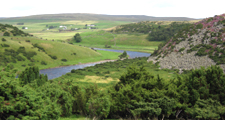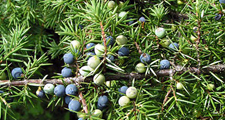Juniper Woodland – W19
Juniperus communis – Oxalis acetosella woodland
Region
North Pennines. Formerly found in small pockets on the coast and in Coalfield Pennine Fringe heathlands.
Character
Open low scrub of rocky moorland margins and hill stream valleys.
Geology
Carboniferous Limestones & Millstone Grits, Magnesian limestones, Coal Measures.
Soils
Various. Acidic and podzolic brown earths. Podzols
Species
Juniper is the dominant species with occasional Downy Birch, Rowan and Hawthorn.
Ground Flora and Fauna
Bilberry, Heather, Cowberry, Wavy Hair-grass.
Structure
Open scrub heavily influenced by grazing. Very diverse form. Irregular canopy.
Management Principles
- Seek specialist advice.
- Prevent grazing by livestock and rabbits.
- Where grazing is long established, and stands are healthy, fit stocking periods & densities to conservation goals.
- Avoid burning of heather other than in a controlled form to promote juniper regeneration.
- Control competing vegetation such as gorse and bracken.
- Create areas of bare ground to encourage regeneration.
- When planting is necessary use plant material of local origins.
- Seedlings take many years to establish – protect with tree guards or small rabbit-proof enclosures and maintain these carefully.
Planting Sites for New Woods
Coastal slopes and denes, lowland & mid altitude heath, upland gills and moorland fringes.
Design Principles
Stands of pure juniper. Minor species in smaller numbers.



